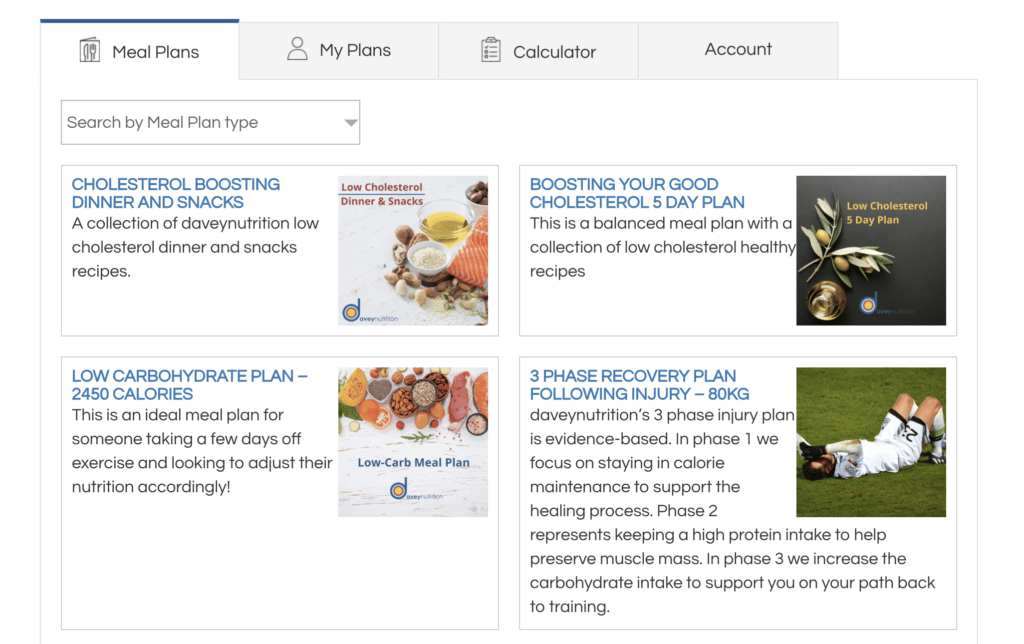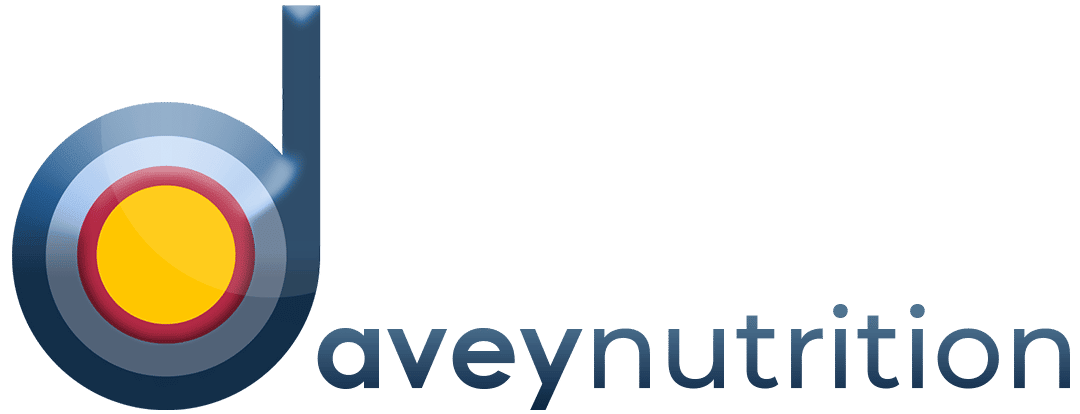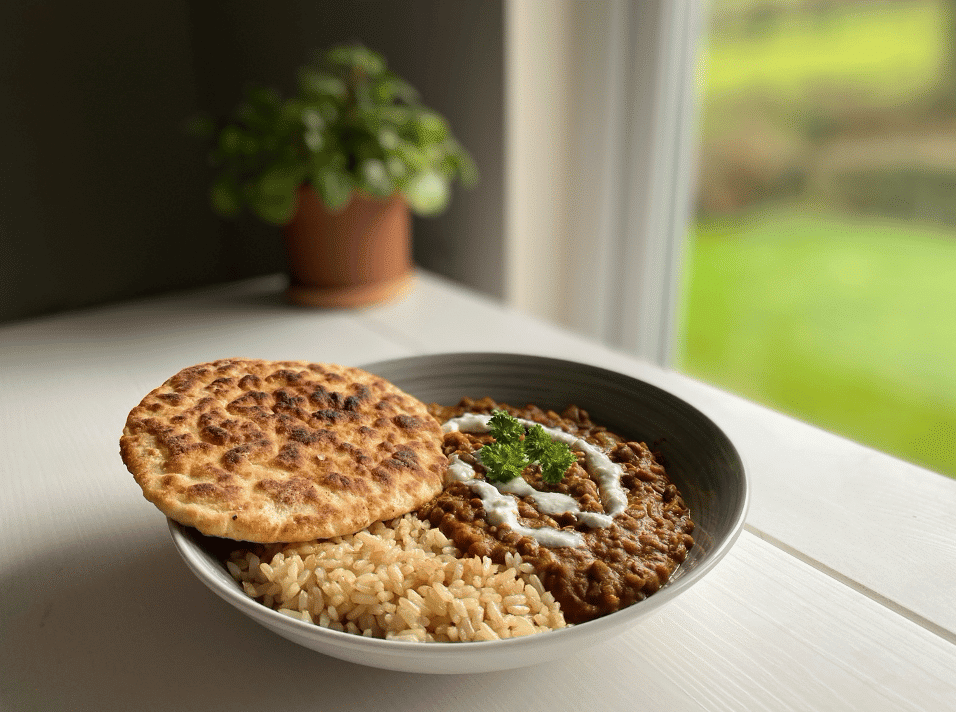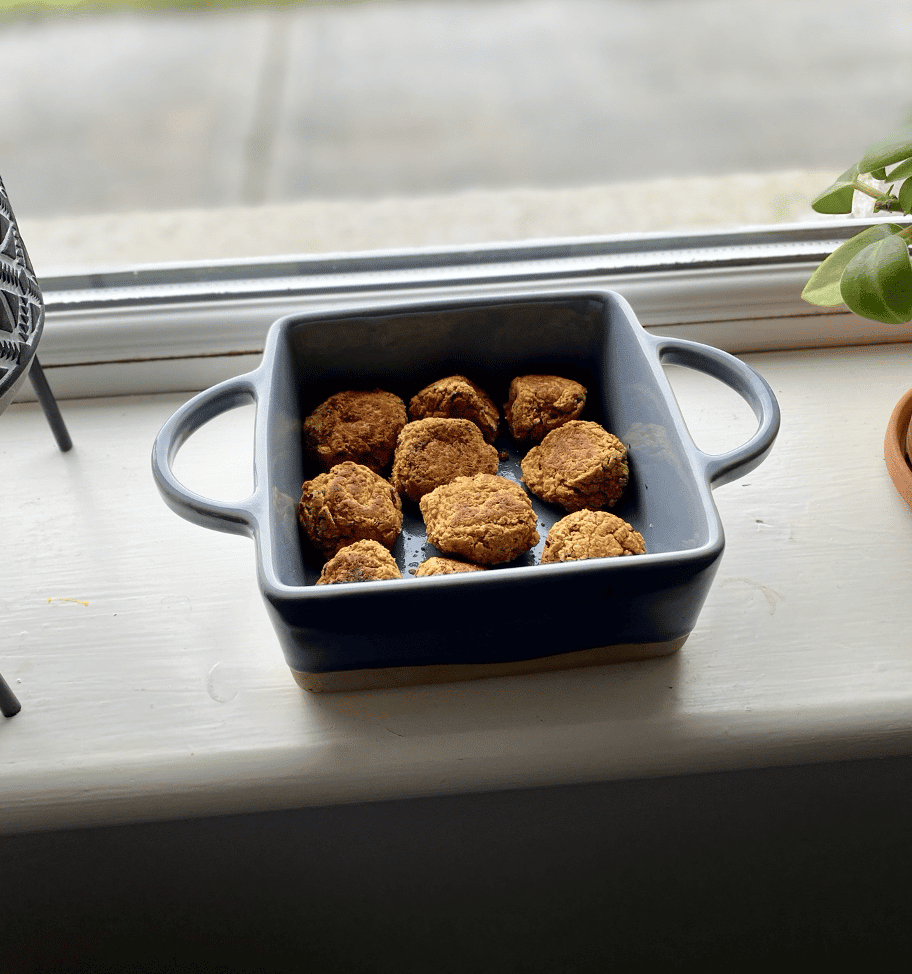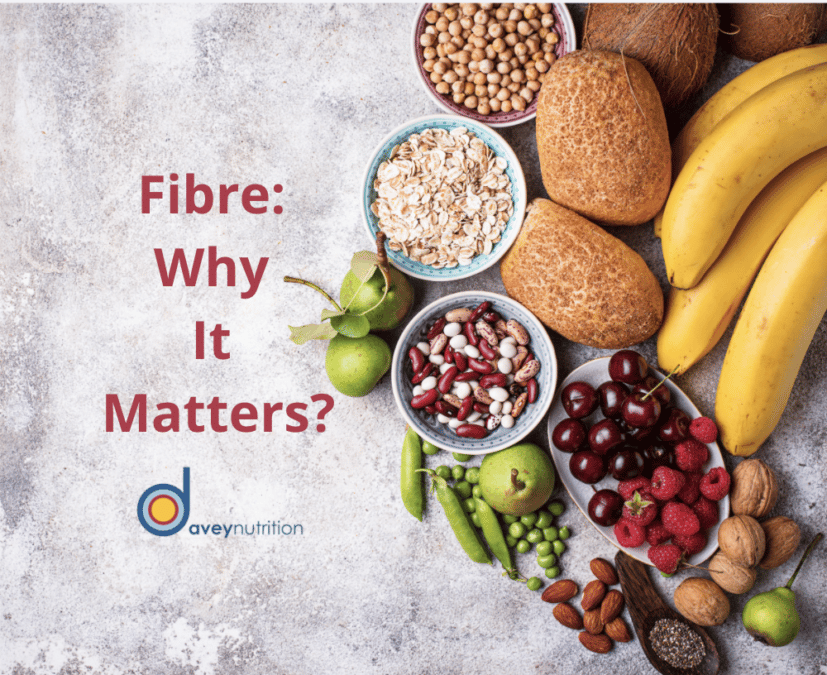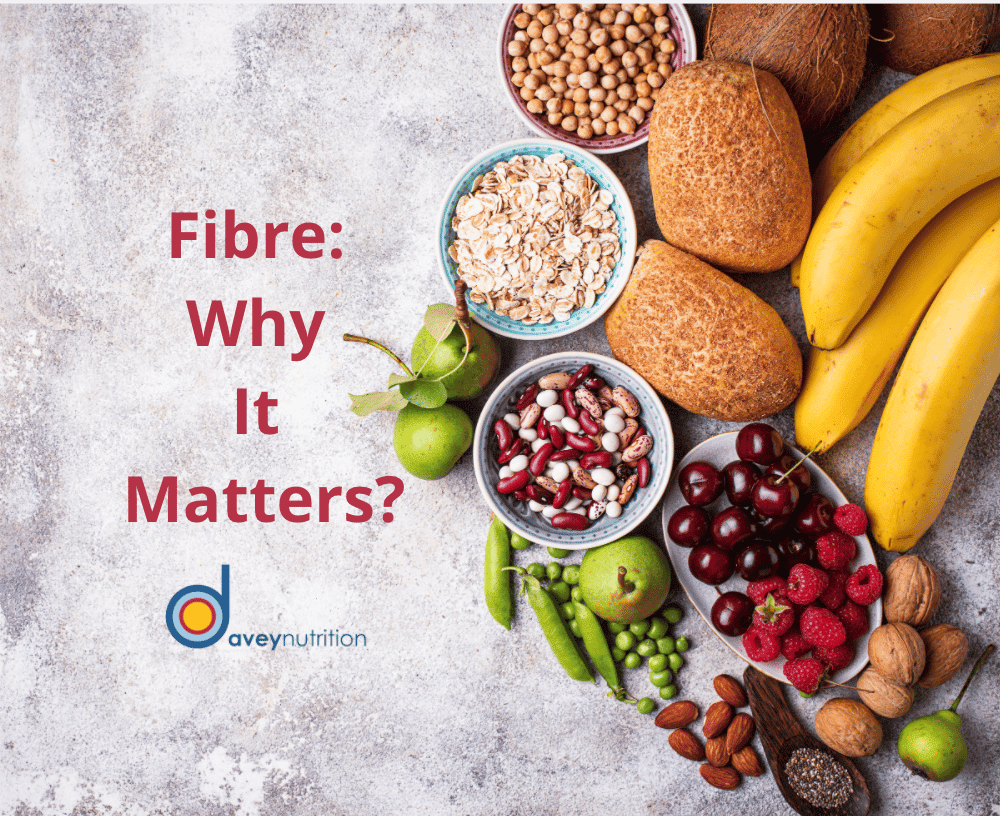Introduction
Fibre! Most health-conscious people are aware of it’s importance for health and optimal digestion, but few people know just how vital it is and why. You may be surprised to learn that fibre comes in many different forms which include cellulose, pectins, gums (i.e. β-glucan), resistant starch, oligosaccharides (including FOS), dextrins and lignin. There is a huge amount of information relating to various types of fibre, so today’s article will provide an overview of the more commonly known concepts of “soluble” and “insoluble” fibre, their role in the diet and why fibre is so important for optimum health. Next week I will evaluate a type of indigestible fibre known as “prebiotics” (but not be confused with “probiotics”), which has recently received considerable media attention due to role in enhancing the health of the gut and enhancing immunity. Firstly though, let’s look at what fibre is and evaluate why it plays such an important role in our health.
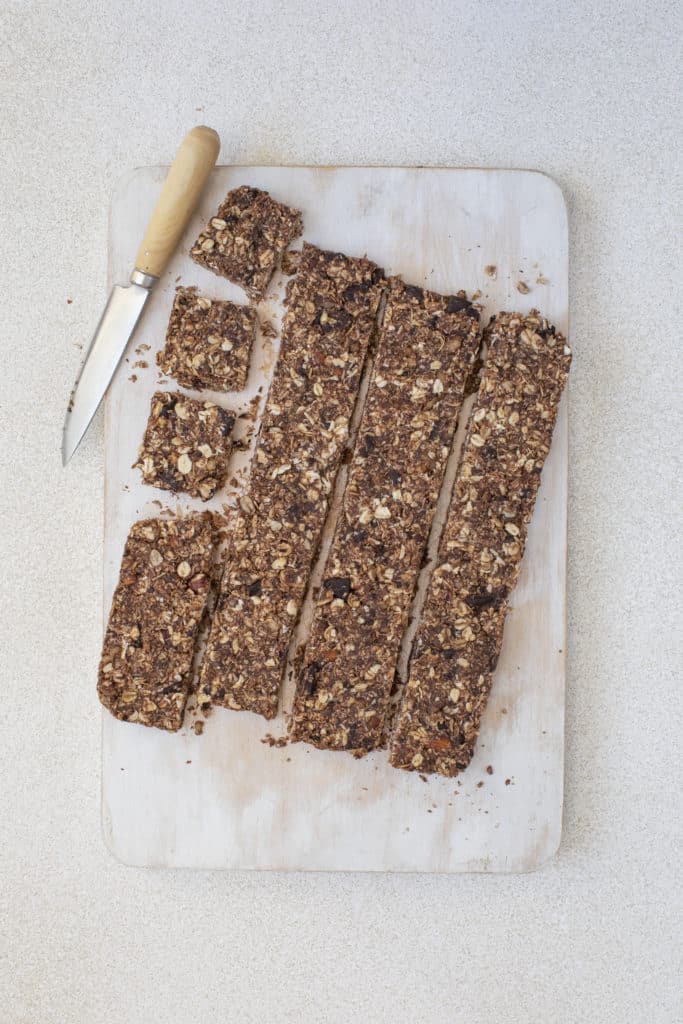
What is fibre?
Dietary fibre, which is also commonly known as roughage, is the part of food that we eat (predominantly from plants) that cannot be digested or absorbed by the body. Technically it is a type of carbohydrate, but when we eat fibre it passes through our body undigested, and thereby supports the transit of food through the gut and the removal of waste material. There are two main types of fibre as I mentioned:
- Soluble fibre: As the name suggests, this fibre is soluble in water, but expands and forms a gel-like substance when mixed with water. This process slows the movement of food through your digestive system giving you a feeling of fullness and by slowing digestion often allows for a steady, rather than rapid, rise in blood sugar levels after a meal.
- Insoluble fibre: By not being water-soluble, this type of fibre assists with the transit of food and waste material through your digestive system. Insoluble fibre helps hydrate and move waste through the intestines and also plays an important role in regulating pH.

Implications of inadequate fibre intake?
Historically, people ate large amounts of fresh vegetables and fruits which meant that daily fibre intake was more than sufficient for optimal digestive health, and not really a general health concern. However, in the modern “Western” diet, the intake of fibre has drastically decreased principally due to the documented rise in the consumption of highly-processed calorie-dense foods, By virtue of their processing, many of these types of foods contain little or no fibre, and unfortunately, eating a processed food with little or no fibre, usually means you eat more without really feeling that full! To make things worse, the general population are not only eating more processed foods, but they are also eating less fresh, whole vegetables and fruits, which are rich in both insoluble and soluble fibre. The consequence of this is that food companies are now finding themselves adding back in fibrous ingredients to foods, hence the surge in foods with “added grain” or “wholegrain” varieties of foods such as breads, crisps, flours and similar – although it is questionable as to whether this makes some of these foods any “healthier”.

The importance of fibre
The most recent recommended daily allowance (RDA) for fibre intakes for both children and adults are 14 g/1000 kcal, or a minimum of 25 g daily for women and approximately 40 g for men. However, like most things this is the bare minimum amount you require on a daily basis, while it may not sound like much many people don’t meet their basic daily requirement. Despite most people knowing fibre intake is important for optimal health, I rarely come across people who meet those guidelines unless they are consume fruit and vegetables on a frequent basis. In fact, research on fibre intakes in the Irish population found that 3 out of 4 adults are not meeting the RDA for fibre. This could be considered an indicator of sub-optimal eating habits in the Irish population in general.
People who consume a diet rich in fibre are suggested to have a significantly lower risk for developing coronary heart disease, stroke, hypertension, diabetes, obesity, and certain gastrointestinal diseases. Increasing fibre intake lowers blood pressure and serum cholesterol levels as well as helping to control blood sugar levels.
An adequate fibre is a key element for anyone looking to reduce body fat and to improve body composition for several reasons. Aside from the effect on blood sugar control, fibre also plays a vital role in appetite control, such that generally speaking, eating fibre-rich foods usually means you feel fuller for longer. Moreover, high fibre foods are usually relatively low in calories, which means that if you consume a fibre-rich diet you will find it much harder to over-eat.
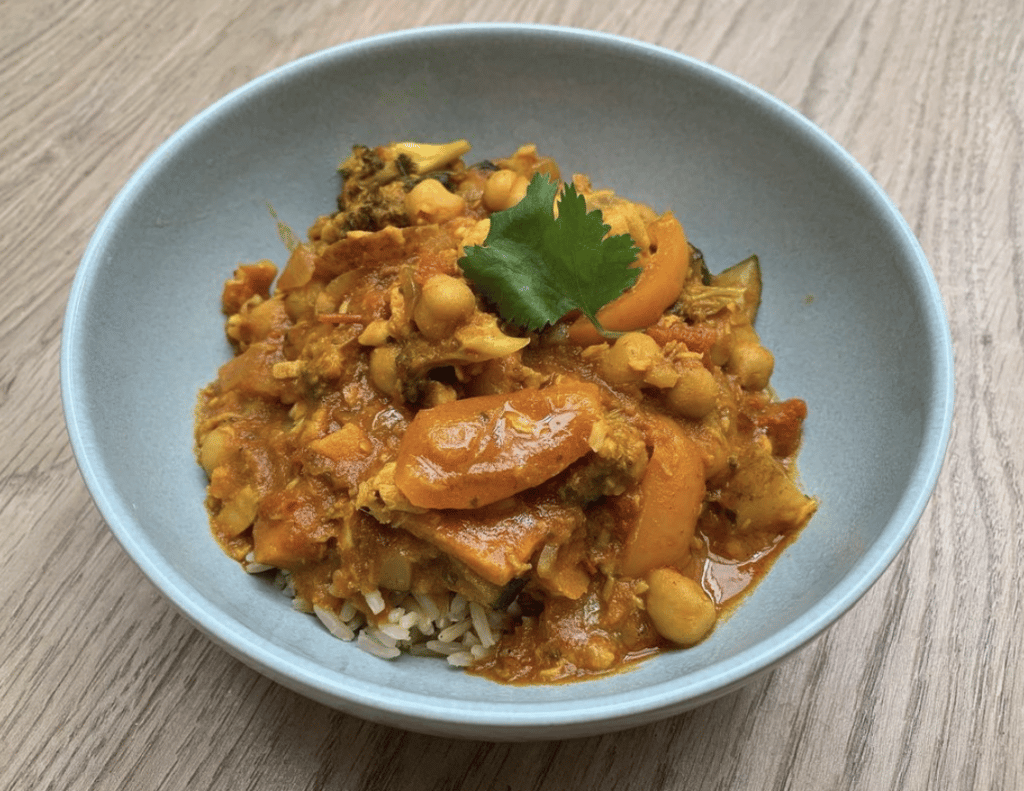
Choosing high fibre foods
A high fibre food is defined as having greater than 6g per 100 g of the food. Just because a label tells you that a product is “high in fibre”, that doesn’t always mean that it is a good food choice, nor is it necessarily particularly high in fibre in reality. Many foods on the shelf are marketed as “high in fibre ” or “good source of fibre” or “with added fibre” to attract buyers or make them feel they are buying something inherently “healthy”. In some cases, this simply means that a marginal amount of fibre has been added to a food in which there was previously no fibre to speak of! More often, foods with high fibre label claims (as opposed to foods naturally rich in fibre) also contain unhealthy fats, added sugars, sweeteners and other additives – in short, they are processed foods. Sugary cereals, cereal bars, snack foods, savoury treats and certain types of breads are most often the culprits for these high fibre claims, and, as I have repeated many times, should generally be avoided.
The best sources of both insoluble and soluble fibre foods are whole, unprocessed foods like fruit, whole vegetables, legumes, nuts and seeds. Rolled or steel-cut oats, buckwheat and quinoa are examples of excellent high fibre grain varieties that you can eat to increase your fibre intake. Below is a simple example of a daily food intake that will more than satisfy your daily requirement for fibre:
Getting your fibre through real food
- Breakfast: A bowl of buckwheat- or oat-based porridge with chia seeds, fresh blueberries and raspberries
- Mid-morning snack: A plum, a pear and a handful of pumpkin seeds
- Lunch: A large bowl of fresh salad with free-range roast chicken
- Mid-afternoon snack: A small tub of natural yoghurt with almond butter and a chopped apple
- Dinner: A large serving of mixed roast vegetables (mixed peppers, butternut squash, courgette, broccoli, cauliflower, and red onions) and a fillet of wild salmon
Does the above look like a typical day for you? Meeting your daily requirement for fibre is not difficult, but we often neglect it’s intake in preference for a processed food that does little for our health. The benefits of a high fibre diet are huge – it helps to improve appetite control, maintain optimum body composition, supports a healthy digestive system and can even help to reduce the risk of certain diseases. If you are consuming a balanced diet with lots of high fibre foods throughout the day, fibre intake is not something you need to be concerned about. The questions are whether your eating habits what they should be and are you getting enough fibre?
To get your started, use the filter on the recipe page to find recipes that are high in fibre, click on a recipe and scroll to the bottom to get insights on the recipe analysis, including fibre content.
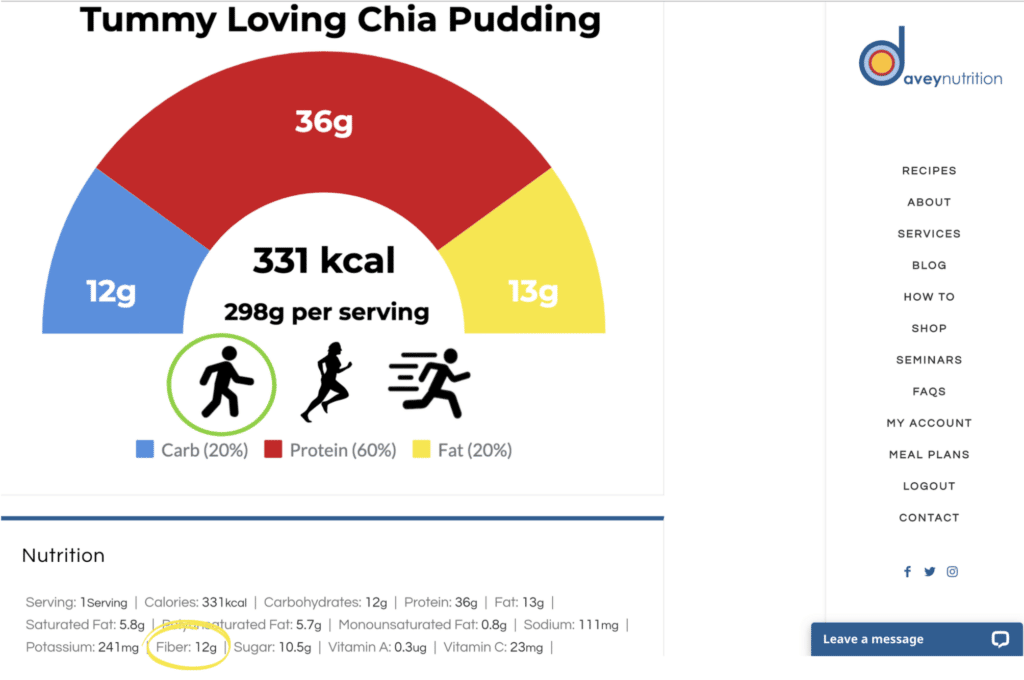
Here are some of our favourites to keep you going!
Lentil Curry with Roasted Balsamic Potatoes
Check out these 3 recent high-fibre recipes:
Coconut Dahl and Easy Naan
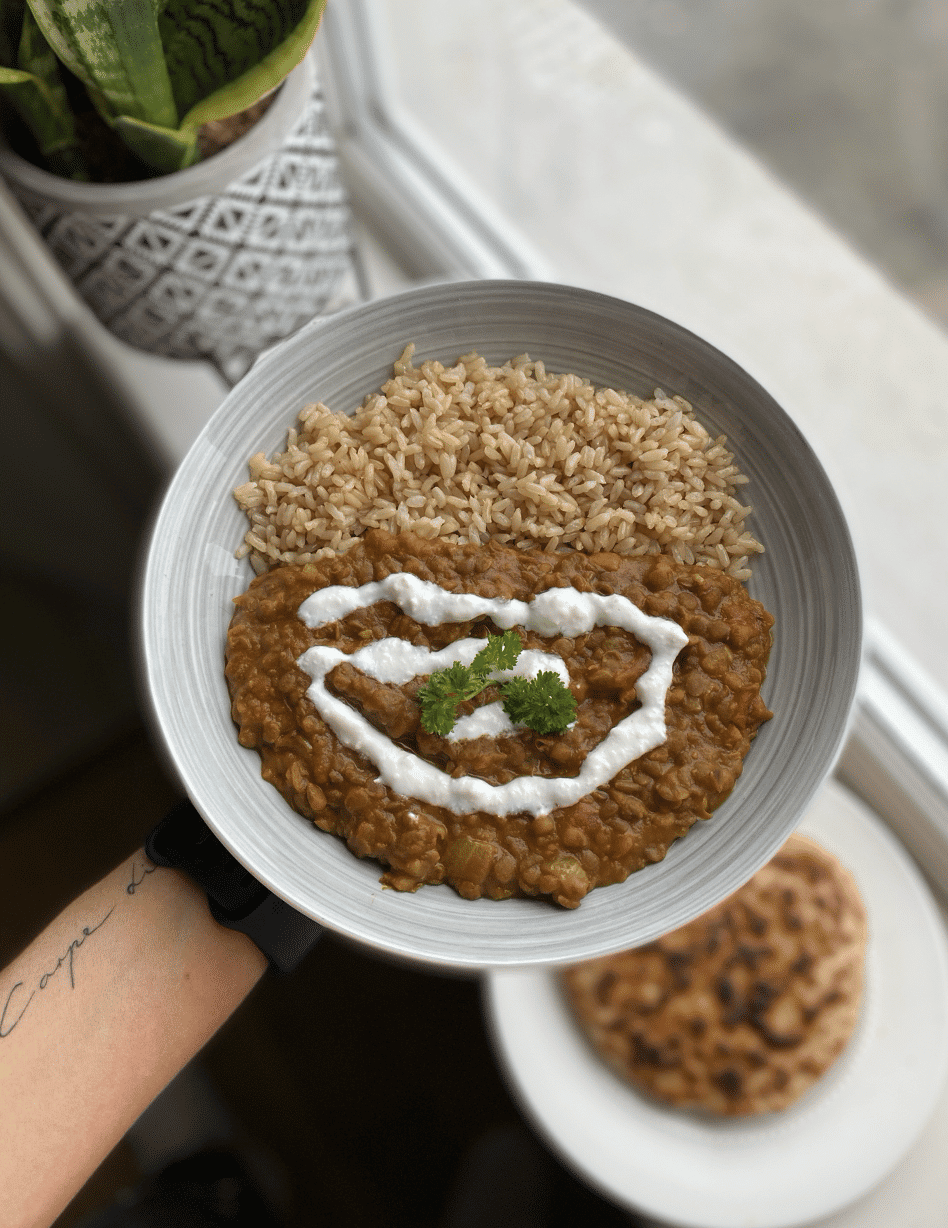

Crispy Balsamic Tofu, Roast Veg with Chickpea Pasta
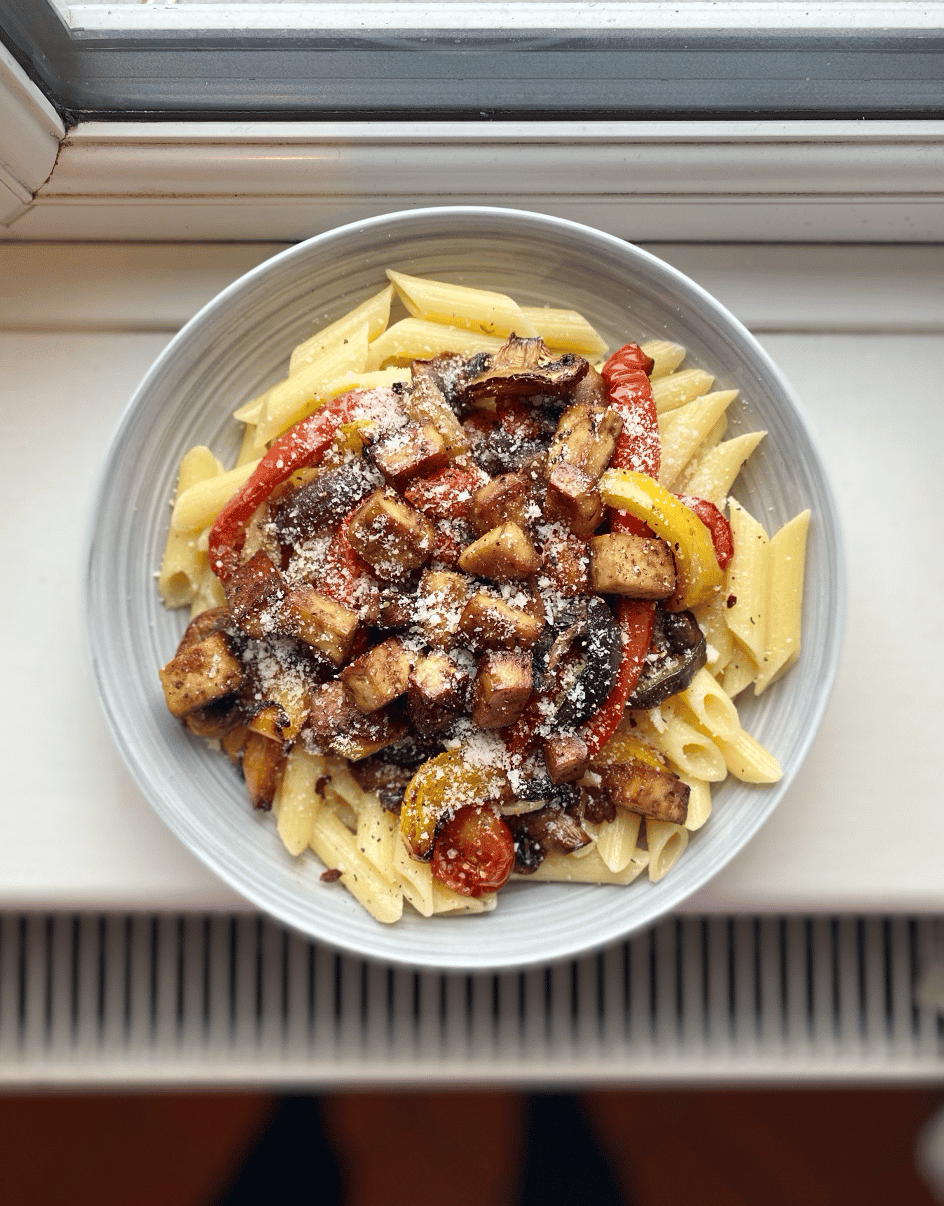
On a final note, each and every meal plan at daveynutrition has been analysed to ensure each day meets your required needs for fibre intake
